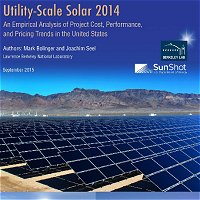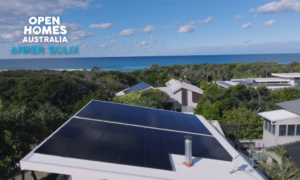The rapid expansion of America’s utility-scale solar sector since 2009 has forced the price of solar electricity down to record low levels according to a new report from Lawrence Berkeley National Laboratory.
Plummeting installation costs, vastly improved system performance and a frenzy among developers to cash in on a 30 percent federal tax incentive for big solar power projects before its 2017 expiration date has resulted in an average solar electricity price of USD5₵/kWh, compared to the national wholesale electricity price of 3-6₵/kWh.
The findings are contained in Berkeley Lab’s latest annual “Utility Solar – 2014” report, which examines trends in the U.S. market of ground-mounted solar energy systems above 5 MW in capacity.
It found the median up-front cost of solar installations had dropped from about $6.3/W in 2009 to $3.1/W for projects completed in 2014, a fall of over 50 percent in just five years. Newer and more efficient solar systems also performed far better in 2014 than their predecessors, with those built in 2013 reporting average capacity factors of 29.4 percent (in AC terms), compared to 26.3 percent and 24.5 percent capacity for systems built in 2012 and 2011.
“This improvement among more-recent project vintages is due to a combination of several trends: newer projects have been sited in better solar resource areas on average, and have increasingly oversized the solar collector field and/or employed tracking technology to increase energy capture,” the report states.
These factors have resulted in a 70 percent drop in the cost of power purchase agreements (solar PPAs) since 2009, to a point where it’s now the norm to see utilities and corporations signing contracts for under USD5₵/kWh, even outside the sun-baked Southwestern states.
At the end of 2014, 45,000 MW of solar capacity was still in the planning stage across the U.S. – over five times the current installed capacity of the entire nation. This, the report says, is a sign that developers are rushing to lock in solar contracts before the federal government reduces its federal tax incentive from 30 percent to 10 percent in 2017.
“Though not all of the capacity in these queues will ultimately be built, presumably most of those projects that are able to proceed will try to reach commercial operation prior to 2017,” the report states. “This looming deadline suggests a frenzied pace of construction over the next 15 months – as well as a wealth of new data to analyse in future editions of this report.”
Utility-Scale Solar 2014: An Empirical Analysis of Project Cost, Performance, and Pricing Trends in the United States can be viewed in full here (PDF)














































